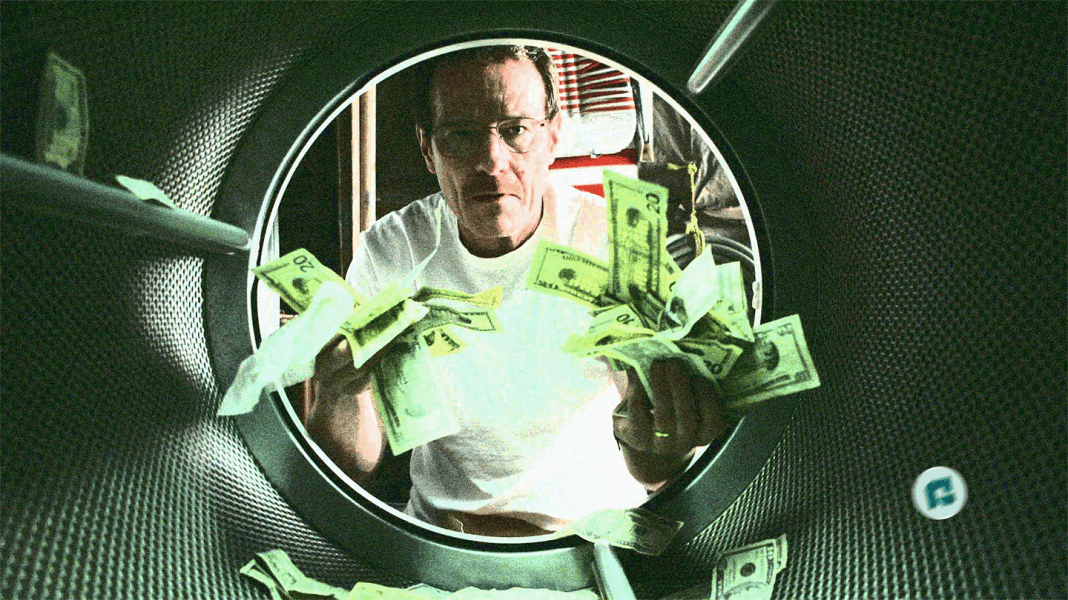
Design: Team Nebula
I take your dirty money and slip it into the salon's nice, clean cash flow," explains Saul Goodman, dodgy lawyer from Breaking Bad to his drug dealer client Jesse Pinkman. His proposition: a seemingly legitimate nail salon to "clean" illicit earnings. "Your filthy drug money has been transformed into nice, clean, taxable income - brought to you by a savvy investment in a thriving business.
Although this Hollywood depiction presents a simplified, nearly humorous perspective, the underlying idea of money laundering is much more complex and real. According to the United Nations Office of Drugs and Crime, money laundering accounts for a startling 2 to 5% of the world's GDP, or trillions of US dollars every year. But, as our economies become less reliant on cash, criminals are adjusting and looking for more complex ways to hide the source of their illicit profits than the traditional nail salon.
"Money laundering, in the simplest terms, is the act of moving money to obscure the proceeds of a crime," as Free Economics Radio Network's Zachary Crockett aptly states. The ultimate goal is to transform "dirty" money into funds that appear to have a legitimate source within the financial system.
It is difficult to gain understanding of this dark world. "Almost all the experts in money laundering are located in one of two places: they are either currently employed by the government doing money laundering investigations, or they are in prison," said Carrie Meers, an associate professor at the University of South Florida and a former FBI special agent with 25 years of experience combating financial crimes. Having looked into multiple money laundering schemes in addition to drug trafficking, white-collar crime, and terrorism cases, Meers, provides a unique viewpoint. "Every time a crime occurs, if that crime has produced criminal proceeds, there's a 95% chance you also have a money laundering charge on top of the underlying crime," he says, highlighting the almost universal nature of money laundering charges.
Consider a drug dealer carrying $100,000 in cash in a suitcase. While minor local transactions may be overlooked, major transactions such as purchasing a home or paying for private school tuition necessitate depositing the money into the regulated financial system, which is heavily regulated, with compliance departments actively monitoring for suspicious deposits, which means that the "dirty" money must be made look legitimate.
How do they manage to do that, then?
McKenzie breaks down the money laundering process into three fundamental stages:
- Placement: Bringing the illicitly acquired money into the regulated financial system is the first step. This frequently entails figuring out how to deposit sizable amounts of cash.
- Layering: After entering the system, the money goes through a number of intricate transactions meant to hide its illegal source. It is challenging for financial institutions and law enforcement to link the funds to the original crime because of these complex movements.
- Integration: In the last phase, the "cleaned" funds are reintroduced into the legal economy by investing in or buying assets, giving the impression that they came from a legitimate source. These phases may show up in different ways. Partnering with companies that operate in a "gray area," where big cash transactions might not draw as much attention, is one popular strategy. In return for the business owner presenting the money as legitimate revenue, the money launderer offers a portion of the proceeds.
Money laundering affects everyone, not just bankers or police officers:
- Criminals use their money to purchase homes, which drives up prices beyond the means of ordinary people.
- Laundered money is essential to the survival of drug trafficking, scams, and other forms of criminal activity.
- Governments spend billions of your tax dollars chasing these criminals, and you pay the price.
Real-life stories you have probably heard-
- Luxury homes: Large mansions in cities like New York or Dubai are purchased with dubious funds.
- Crypto chaos: To avoid being caught, criminals use Bitcoin to hide their identities.
- Major scandals: The Panama Papers revealed how well-known and wealthy people hidden billions of dollars offshore.
Who’s Helping the Bad Guys?
- Banks: Some ignore the red flags for a cut.
- Fake companies: Empty “businesses” that just move money.
- Crooked accountants: They twist the numbers to hide the truth.
- Online apps: Cash flies through digital wallets with a tap.
- Local shops: That quiet barber shop might be a front.
The effectiveness of anti-money laundering laws in lowering the total amount of illicit financial flows is still up for debate, despite the strong legal framework and enforcement initiatives. "I think there is definitely a societal question as to whether financial institutions should be deputized to work as law enforcement," says Patrick McKenzie, posing a fundamental query regarding the function of banks. Privacy advocates worry about the possibility of overreach and the blurring of boundaries between state surveillance and financial institutions, even though law enforcement agencies rely significantly on banks data and compliance efforts.
The underworld is kept afloat by money laundering. Scams on your phone, drugs in your town - every dollar laundered contributes to more crime. It's a never-ending chase: criminals evade detection while police tighten the net. Consider this the next time you see a gaudy store empty: Is it just business, or is there something more sinister going on?
